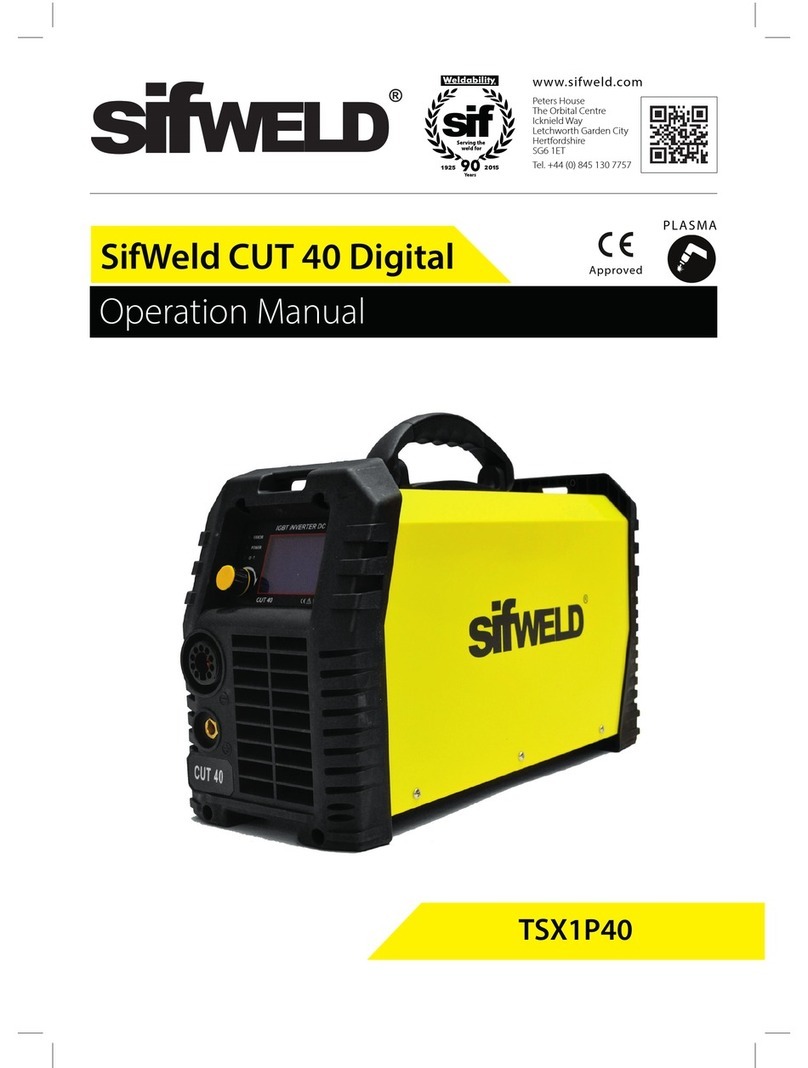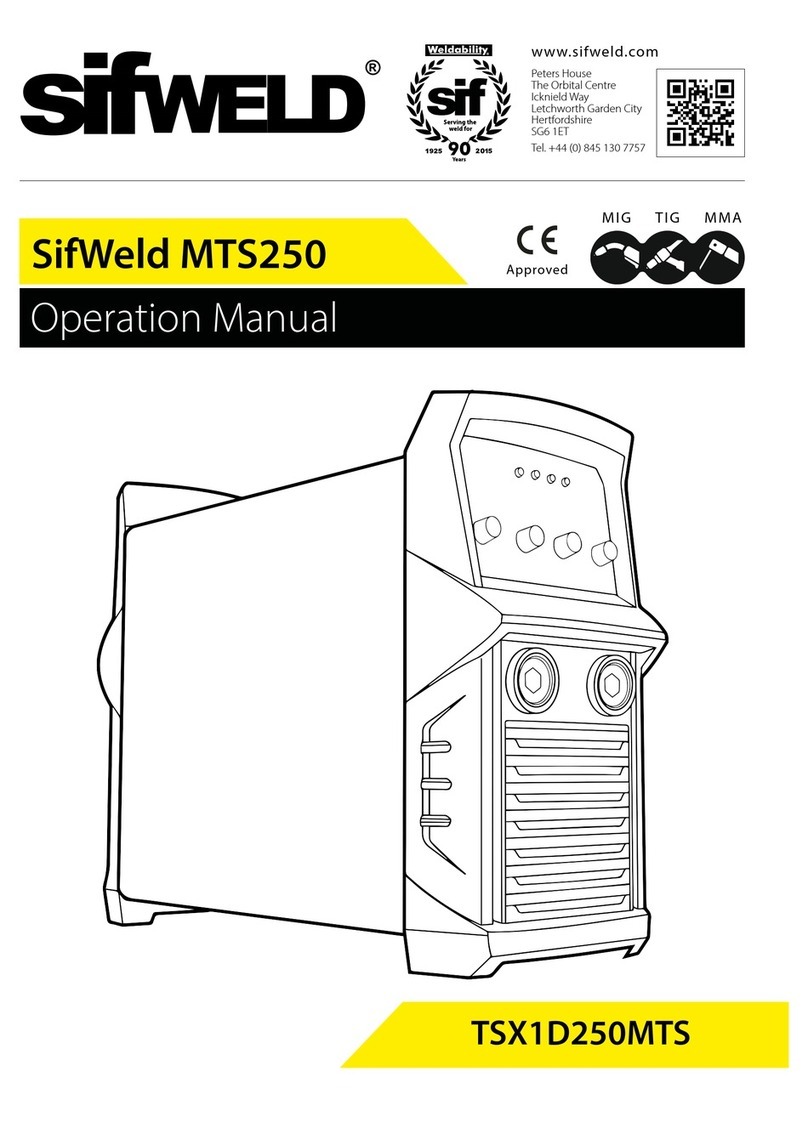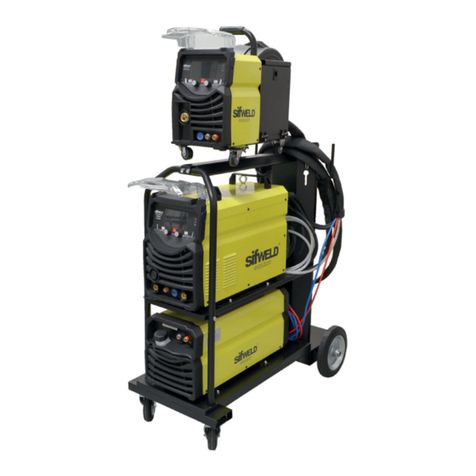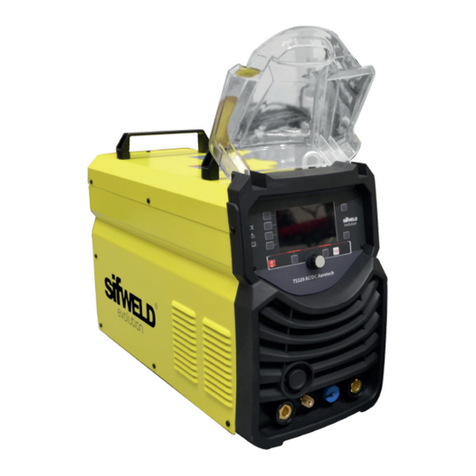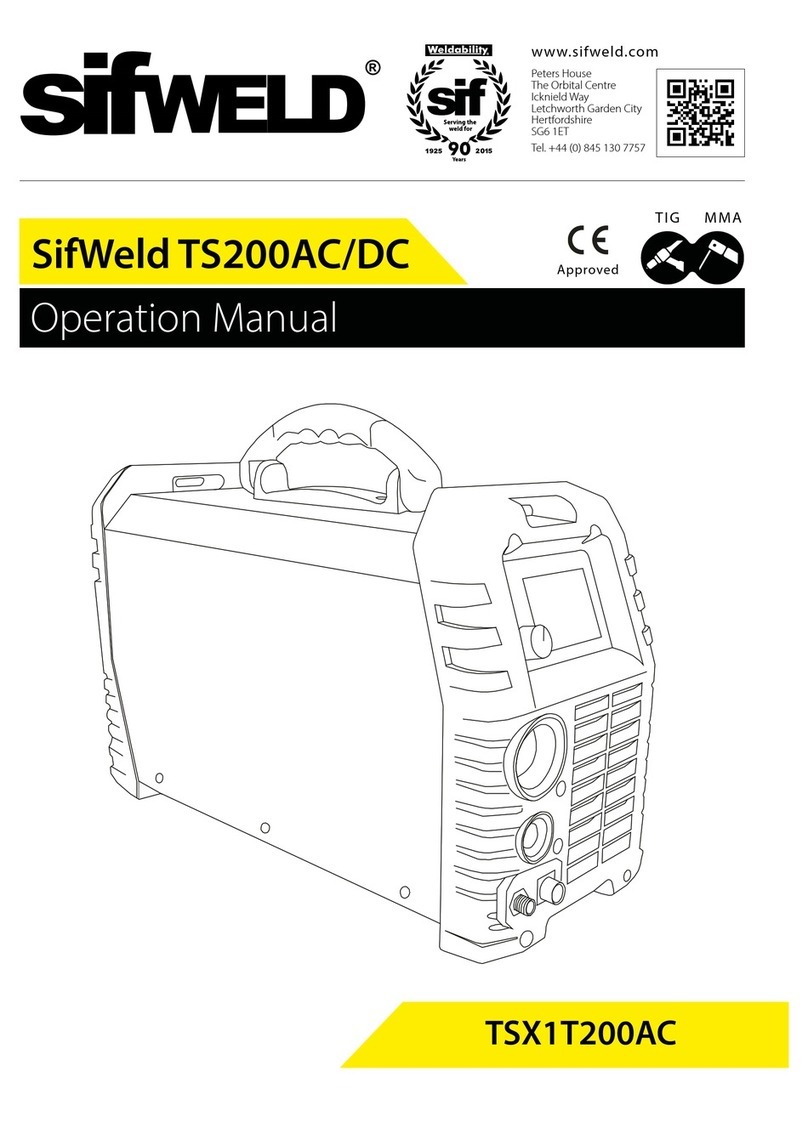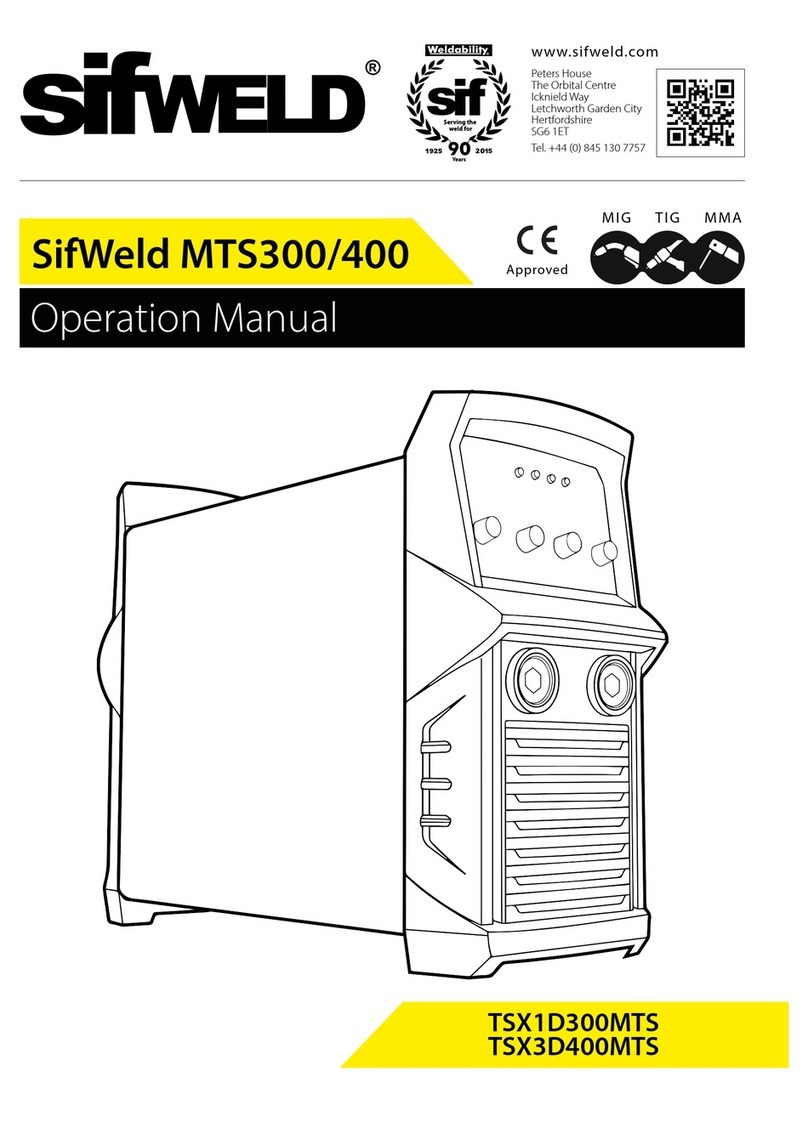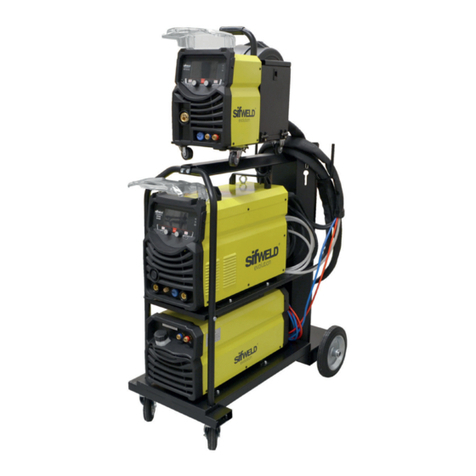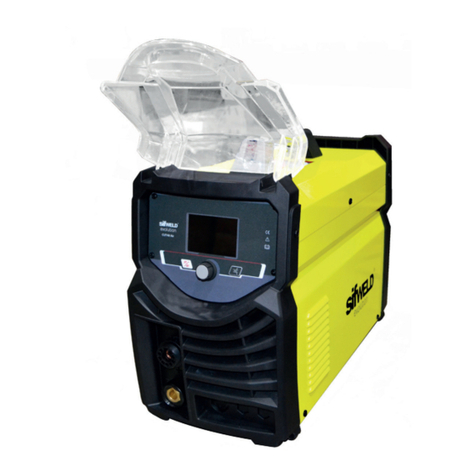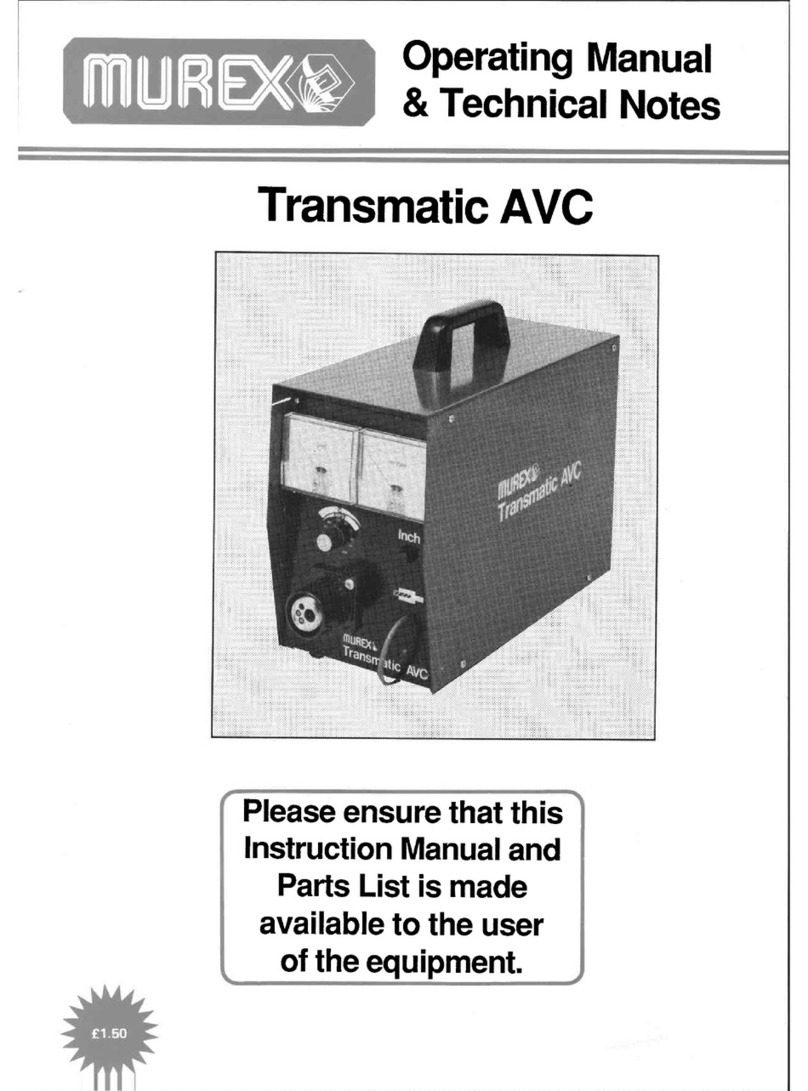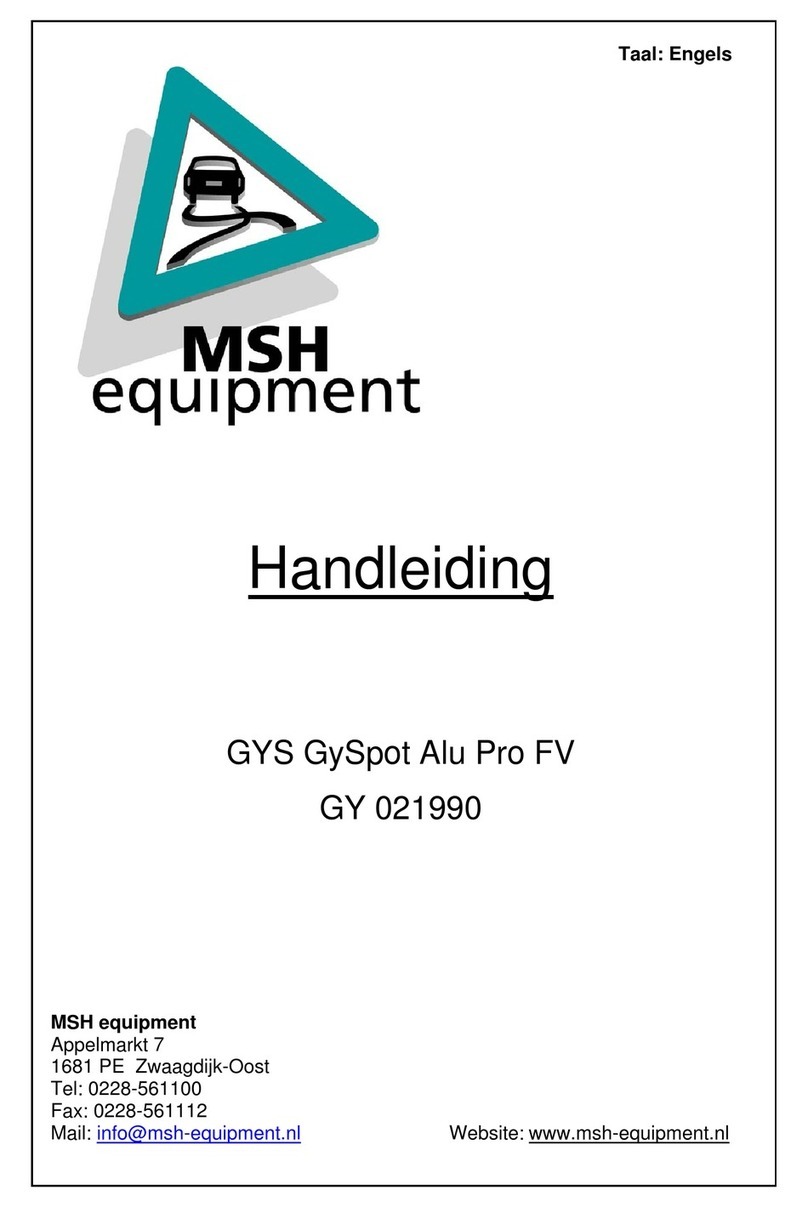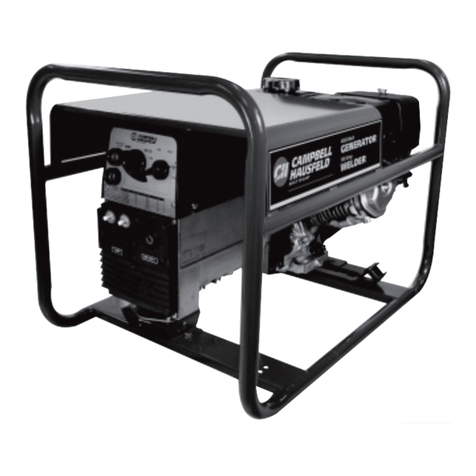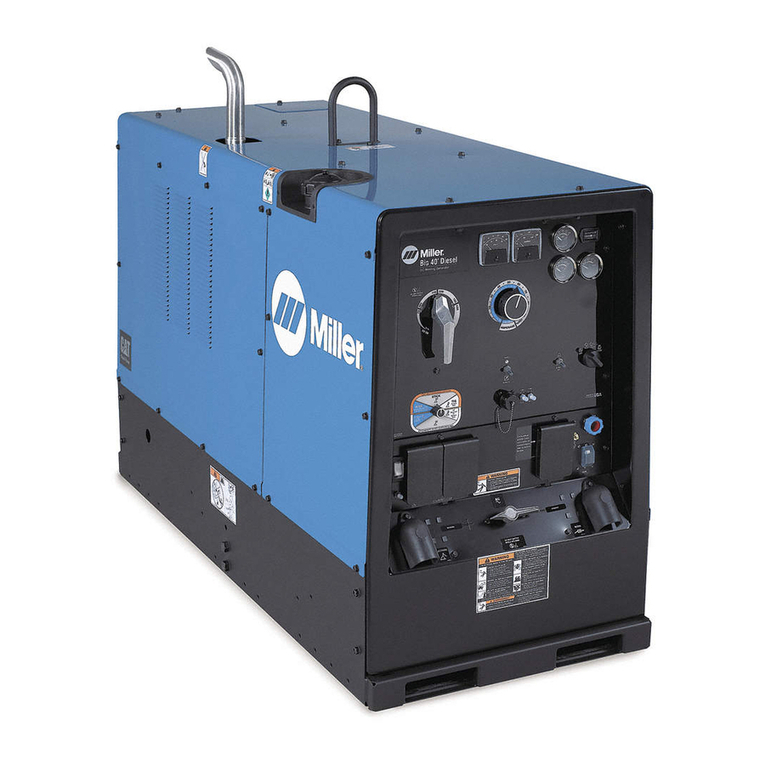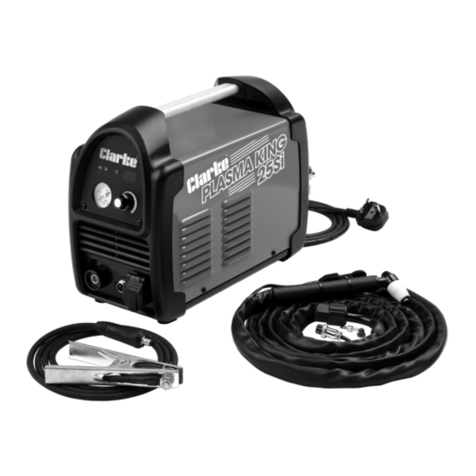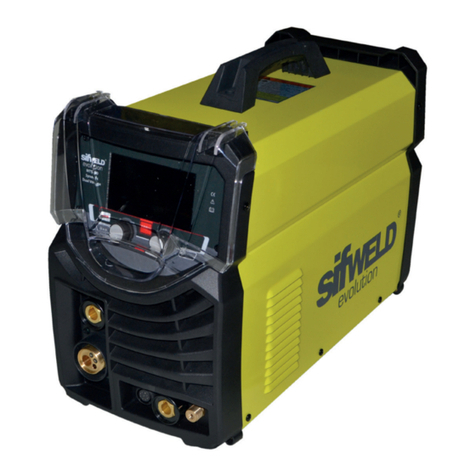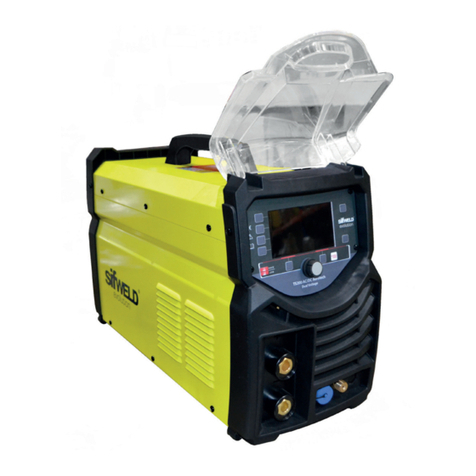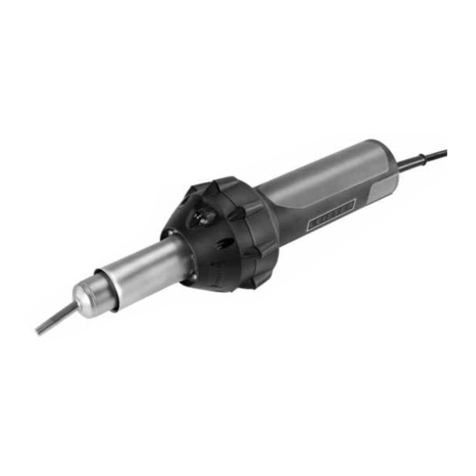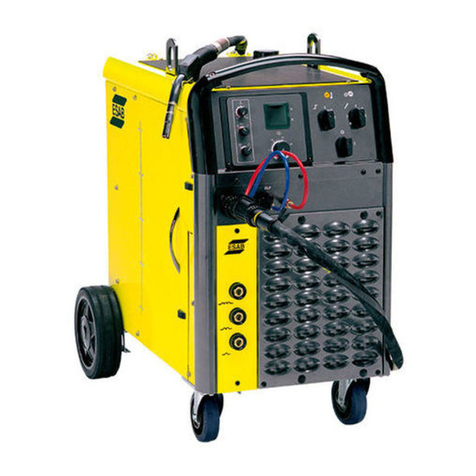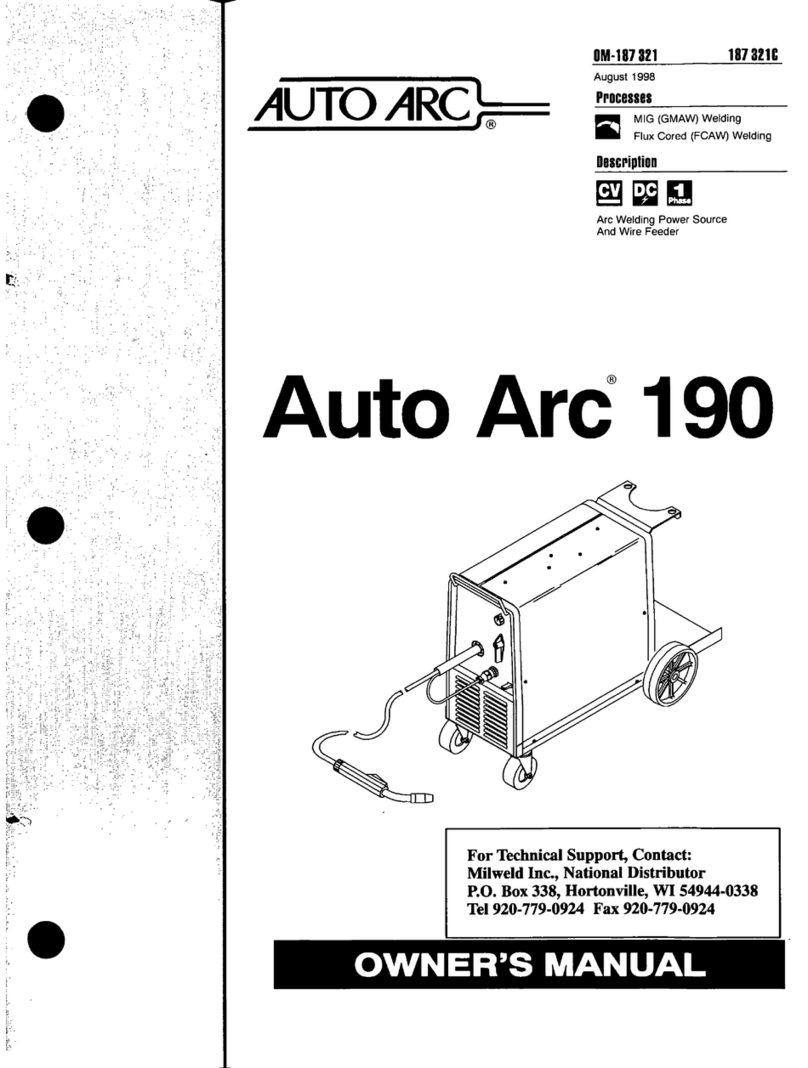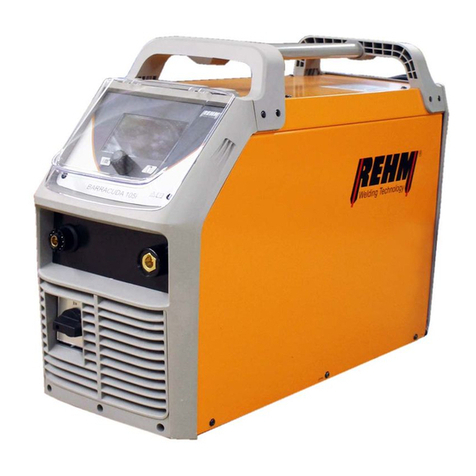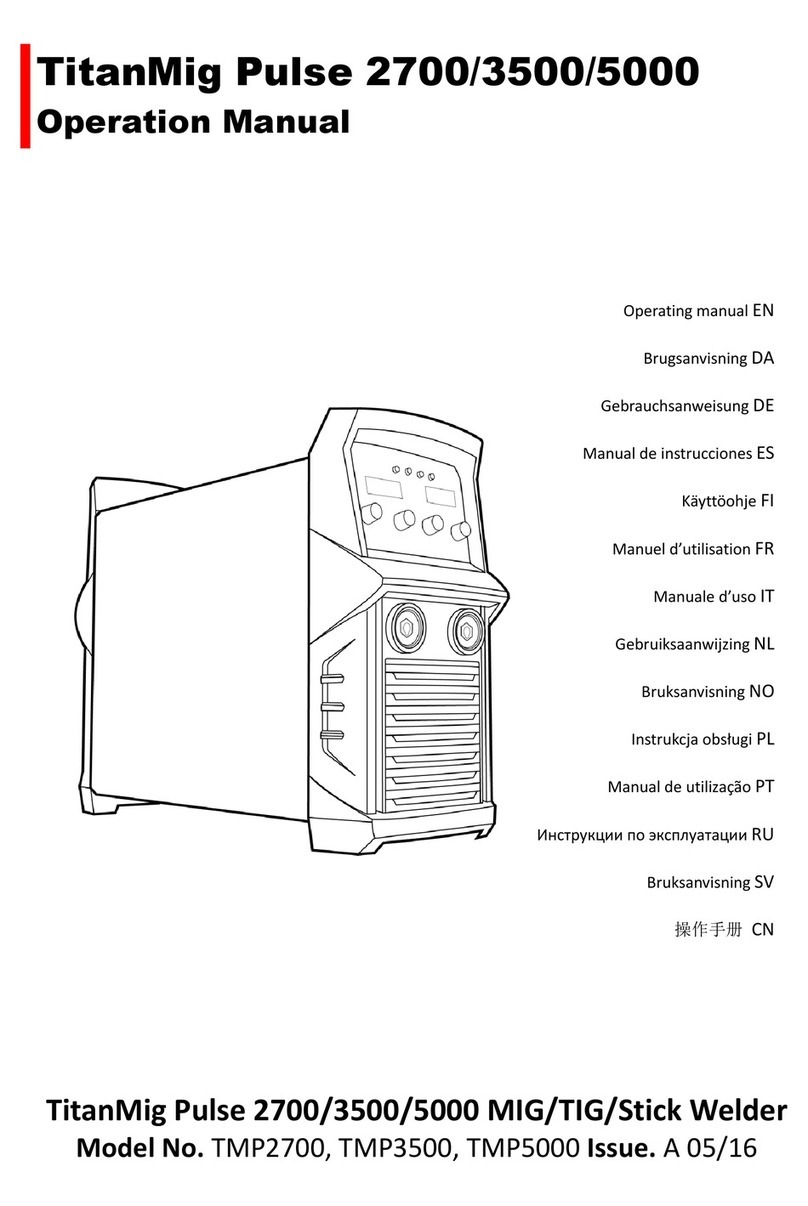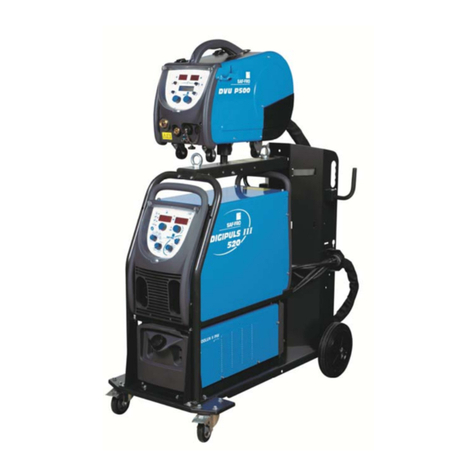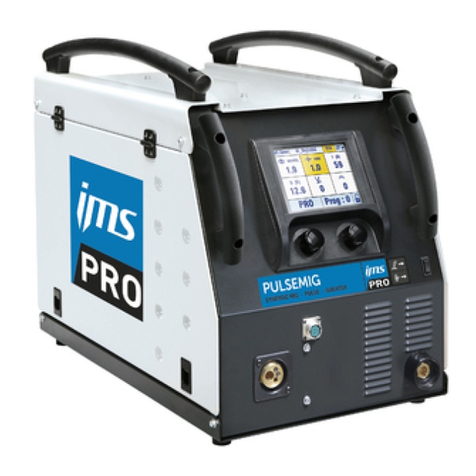1514
Sympton Cause
4. Troubleshooting 5. Maintenance
If you are unable to address any problems with your plasma cutting machine by following this basic
troubleshooting guide or if you need further assistance, contact an authorised SifWeld service centre.
Solution
The cutter is non-responsive after
pushing the torch switch.
• The switch or control cable is broken.
• The control transformer is broken.
Connect or replace the torch switch.
The transformer will need to be
checked and / or replaced.
The working indicator light is
permanently illuminated.
• The switch or switch terminal is
short-circuiting.
Replace or connect the switch
terminal insulated and check insulation.
The machine casing is live.
Note!
Switch off machine input power
immediately.
• An internal lead, cable or live part
may be in contact with the casing.
• The machine may not be earthing
properly.
Check that all leads and live parts
are insulated.
Replace insulation if necessary.
The casing should be earthed reliably.
Failure of arc to ignite with
high frequency.
Input power supply insufficient or
lacking a phase.
• The torch cable is an open-circuit.
• The spark distance from the nozzle
to workpiece is too small.
• The earth lead has a poor contact
to workpiece.
• There is water in the air compressed
air supply.
Clear torch connections.
Adjust to 2mm.
Check earth clamp and plug
connections.
Check input power supply.
Drain water. Provide vapour-free
air supply.
The penetration of the workpiece
and/or cutting quality is poor.
• The material thickness is too much.
• The cutting speed is too high.
• The torch incline angle is too big.
• The air compressor pressure is out
of the optimum range.
Cut material within the machine’s
thickness range.
Slow down the cutting speed.
Adjust the angle of the torch.
Adjust the air pressure via the
regulator at the rear of the machine.
The arc extinguishes suddenly
during cutting.
• The cutting speed is too slow.
• The distance from nozzle to work
piece is too near/far.
•The cutting tip or electrode are worn.
Increase your cutting speed.
Adjust the distance between the
torch and the workpiece.
Replace the cutting tip or electrode.
The utilisation level of the power source and its working environment should be taken into
consideration in planning the frequency of maintenance of the machine. Appropriate use and
preventive maintenance guarantee the best trouble-free use of the equipment. This allows you to avoid
interruptions in use and increases the productivity of the machine.
5.1 Cables
Check the condition of torch, earth and mains cables daily. Do not use damaged cables. Also make
sure that all extension cables used in the mains connection are in proper condition and compliant
with regulations.
NOTE! The mains cables should be repaired and installed only by electrical contractors and
installers trained and authorised to perform such operations.
5.2 Power source
Before cleaning the interior of the machine, you need to remove the case by unscrewing the mounting
screws at the top and sides of the machine.
NOTE! To prevent damage, wait approximately ve minutes after disconnecting the mains cable
before removing the machine’s case. Perform the following cleaning and maintenance at least
every six months:
1. Clean the interior of the machine and the fan grills net of any dust and grime stains – for
example, with a soft brush and vacuum cleaner.
• Do not use pressurised air. The contaminant may become compressed into the grooves of the
coolers.
• Do not use a pressure-washing device.
2. Check the electrical connections of the machine. Clean any oxidised connections, and tighten the
loosened ones.
• Check for the right tension before you start repairing the connections.
NOTE! Remember that the machine may be repaired only by an electrical contractor or installer
trained and authorised to perform such operations.
5.3 Regular maintenance
Authorised SifWeld service centres can perform regular preventative maintenance by agreement. Tasks
included in regular maintenance:
• Cleaning of equipment.
• Inspection and maintenance of the cutting torch.
• Checking of connectors, switches, and control knobs.
• Checking of electrical connections.
• Checking of the mains cable and plug.
• Replacement of damaged or worn parts.
• Testing and adjustment of the functions and operational values of the machine, if necessary.
• Check the function of all switches.
• Check that the cooling fan is operating and air is being vented from rear panel.
• Check for abnormal vibration, noise or smell during operation.











